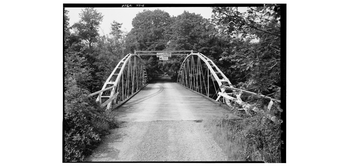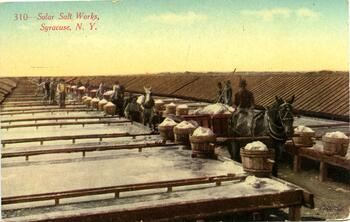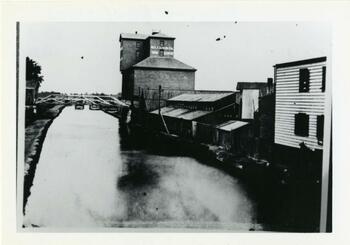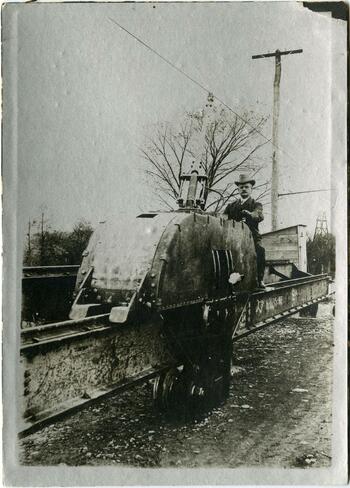The Erie Canal significantly increased the amount of tonnage of virtually any and every commodity that could be shipped, giving rise to many innovations in productivity and efficiency. For example, as the demand for salt from the salt springs around Syracuse increased, the supply of wood to fuel the boiling of brine rapidly diminished. Fields of solar ovens were built to use the heat of the sun to evaporate the water from the brine. That nineteenth-century salt operation remains to this day one of the largest solar energy projects in the history of the world.
The iron-truss bridge, first developed by Squire Whipple for crossing the Erie Canal was later adapted for the railroads. As Midwestern grain was offloaded at Buffalo, the need arose to store the vast quantities of grain to be shipped. The grain elevator, invented by Joseph Dart in Buffalo, resolved the need for large storage containers to hold the ever-growing shipments of raw materials (flour, coal, etc.) from the West, and its use persisted after the height of the Erie Canal’s popularity as a means of transporting goods. Other innovations such as the “Electric Mule” were not as successful.
Whipple Cast & Wrought Iron Bowstring Truss Bridge, Normans Kill Vicinity, Albany, Albany County, NY. Courtesy, Library of Congress, Historic American Buildings Survey/Historic American Engineering Record/Historic American Landscape Survey.
This postcard depicts the Solar Salt Works in Syracuse, New York. From May through November, solar evaporation of brine to produce salt was employed as an alternative to boiling that required lumber as fuel. Courtesy of Liverpool Public Library via Central New York Library Resources Council and Empire State Digital Network.
This photograph shows the Maxon & Co. grain elevator along the Erie Canal in Schenectady, New York. In 1843, Joseph Dart successfully implemented his steam-powered "bucket elevator" that transported grain from lake boats to enormous storage bins until ready to be shipped east on the Erie Canal. Courtesy of Schenectady County Historical Society via Capital District Library Council and Empire State Digital Network.
This 1900 photograph shows a man operating the experimental "electric mule," created to replace actual mules and horses in the towing of barges and boats on the Erie Canal. Courtesy of Schenectady County Historical Society via Capital District Library Council and Empire State Digital Network.



